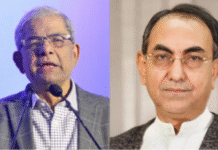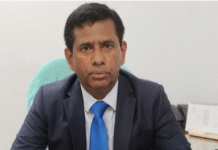A national issue with global ramifications

Bangladesh remains a locus of human trafficking
The ever growing, globally concerning act of human trafficking has unfortunately victimized women and children on a large scale. Despite the overwhelming development in various sectors, Bangladesh remains a locus of this barbaric practice. The answers to how, where, and when trafficking takes place is becoming incrementally difficult as they are ever changing.
Bangladesh is one of the source countries and transit points for human trafficking, as these heinous criminals continue to expand their business more and more because of the lack of proper steps taken by the government and its citizens.
According to information from the police, since the Prevention and Suppression of Human Trafficking Act 2012 was passed, around 3,500 cases were filed, but the victims complain that most of these cases are grievously delayed. Some people never get justice. Some families feel so hopeless losing their close ones that they have lost faith in the justice system.
Studies and surveys conclude that while females are trafficked for marriage and sex-slavery, children find themselves working as forced labourers, slaves, camel-jockeys, or are sexually exploited. The lack of accountability from labour-recruiting agencies contributes to this boost in human trafficking. Some women and children become victims of this crime by fate, as they come to work far away from their homes for a better life.
These women and children are sometimes trafficked by land routes and sometimes by water routes. Usually, these victims are taken to countries so far away and in such conditions that they cannot come back to their families again. Some victims are tortured so much that they die or lose the guts to escape these situations.
Bangladesh plays a substantial role, being the trafficking hub that links South Asia to the Gulf region. The principal route that is followed by traffickers starts from Dhaka to Mumbai, Karachi, and then Dubai.
Human traffickers usually use 20 transit points located in 16 districts to smuggle people from Bangladesh to India. It is also notable that other transit points have been discovered very recently, and are used to smuggle people from Bangladesh to South-East Asian countries using water routes.
Adding to that, from January to March of 2015, approximately 25,000 people from other parts of the country were trafficked using the Teknaf, Ukhia, Cox’s Bazar Sadar, and Maheshkhali points. In June 2015, a Bangladesh Coast Guard team rescued 116 people from the Bay of Bengal, two-thirds among whom were 16 to 25 years of age.
Despite not being well versed in tackling this issue, Bangladesh has taken significant steps to prevent this epidemic from spreading further. Bangladesh has now addressed sex trafficking, but is yet to address offenders of labour trafficking.
There are punitive actions outlined in the Penal Code 1860 for human trafficking. There are provisions and punishments given in the “Women and Children Repression Prevention Act 2000” — as women and children are the major victims of this heinous crime, this act plays a significant role.
Also, the Children Act of 1974 and 1993 seeks to protect children from exploitative and hazardous conditions. Bangladesh is yet to address the offenders, which would make it easier to get rid of this problem altogether. Reporting suspicious activities, raising awareness, and passing stricter laws can aid in eliminating this heinous crime and enable us to live in a better society.
Sabiha Mehzabin Oishee is a student of law.









